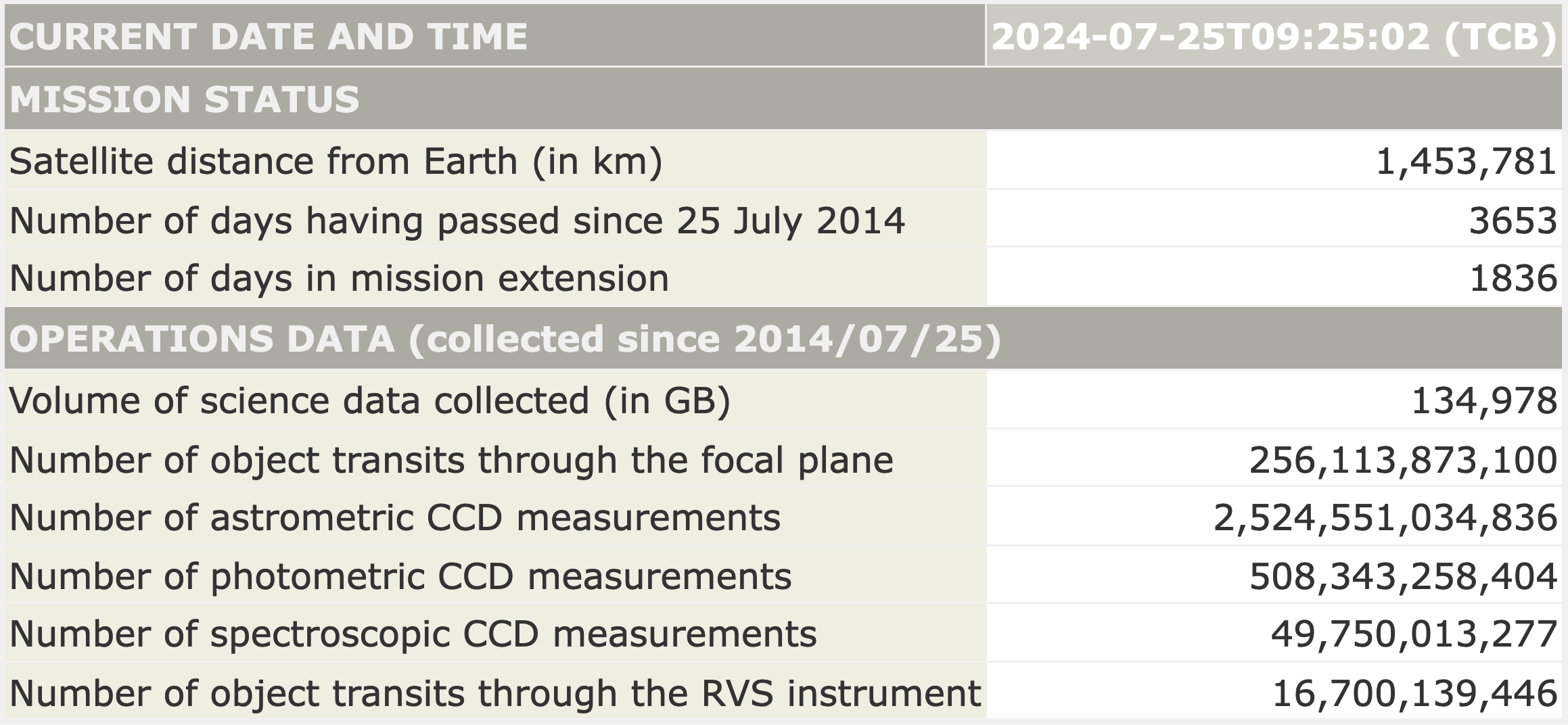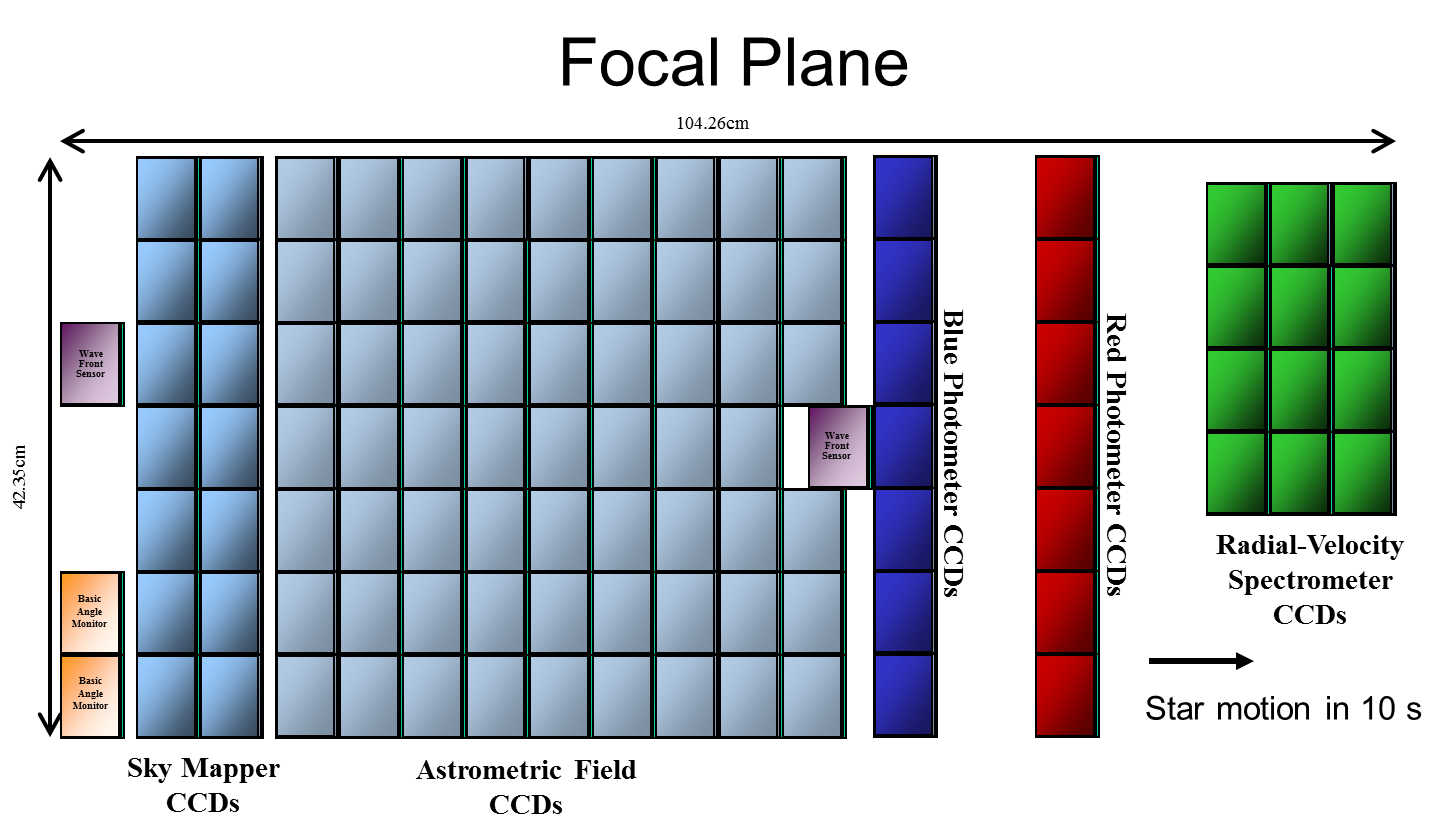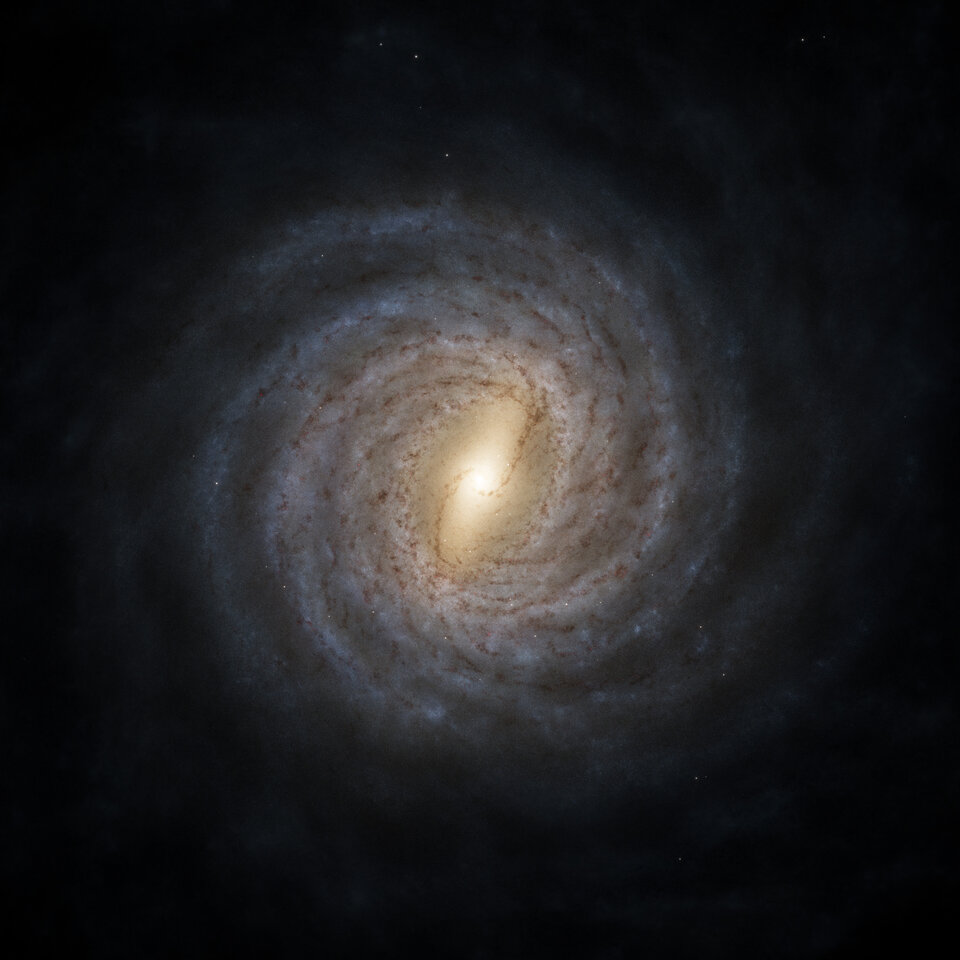IoW_20240725 - Gaia
Image of the Week
10 years of Gaia science operations
Figure 1. Some impressive numbers from the Gaia mission. The numbers are based on the predicted spacecraft ephemeris and the data accumulated by the science Data Integrity and Accountability Checks service. These numbers are updated multiple times per day and published on this page, which contains also more information on the exact meaning of each type of measurement taken. The numbers above represent 10 years of Gaia science operations. Credits: ESA/Gaia/DPAC - CC BY-SA 3.0 IGO.
Today Gaia celebrates 10 years of science operations. The above image shows some impressive numbers on the current status of the Gaia mission. Since the start of Gaia's science operations phase on 25 July 2014, Gaia has scanned across more than 256 billion objects. The typical star flow in the focal plane is about 3400 stars per second. It is good to realize that this is the typical star flow, not the maximum nor the minimum! It makes a big difference whether Gaia scans over the Galactic plane, an area bursting with stars, or over the Galactic anticentre, a less crowded area in the sky. Some areas are so crowded that Gaia adds a different type of observation because its regular way of observing objects cannot cope with the large amount of stars in view, and special engineering images are stored to allow capturing even more stars per second. A story discussing Gaia's observation of a crowded area was published along with Gaia's Focused Product Release: "Omega Centauri, a globular cluster bursting with stars - Gaia's additional data from engineering images taken in crowded regions".
When Gaia scans objects, the objects transit across the CCDs in the focal plane. The Gaia focal plane consists of two columns of Sky-Mapper CCDs, 9 columns of astrometric CCDs, 1 column each for the red-photometer and blue-photometer CCDs, and finally also 3 columns (with reduced amount of rows) of radial-velocity-spectrograph CCDs, as illustrated in the figure below. Full details on the focal plane can be found here and also from the Gaia Data Release 3 Documentation. A whopping amount of over 2.5 trillion astrometric CCD measurements were taken by now, along with over 500 billion photometric CCD measurements and close to 50 billion spectroscopic CCD measurements (see Figure 1).
Figure 2. Gaia focal plane as published here. Image credit: ESA. Acknowledgement: Alex Short.
So far the Gaia Collaboration has published new data 5 times already: Gaia Data Release 1 in September 2016, Gaia Data Release 2 in April 2018, Gaia Early Data Release 3 in December 2020, and Gaia's full Data Release 3 in June 2022 (which together form one complete data set). The last data release was focused on 5 specific data products: Gaia's Focused Product Release, as available since October 2023. Gaia's Data Release 4 is planned not before mid-2026 and will contain for the first time all data products planned for the nominal mission, a huge catalogue which is expected to amount to more than 500 TB of data.
Gaia's data releases have brought a wealth of star data, on stars in our Milky Way and beyond. But Gaia adds many other data products on top of its star data. The Gaia catalogues contain information on Solar system objects as well as on galaxies and quasars. The Gaia data releases are prepared by the Gaia Data Processing and Analysis Consortium in collaboration with the ESA Gaia teams. About 450 people from 25 countries contribute to the Gaia data processing! A story on the people behind the scenes was published with Gaia's Data Release 3: "Who produced the data? The people behind the scenes!".
Figure 3. Infographic on Gaia's 10 years in space, as published here and as created in view of Gaia's 10th launch anniversary. Credits: ESA, CC BY-SA 3.0 IGO.
The data sets released so far have been used heavily by astronomers across the world. In the figure below the yearly amount of peer-reviewed papers using Gaia data can be found. Currently, on average, about 5 Gaia-related papers are published per day. A full library with all Gaia-related papers can be found from the Gaia ADS libary. Stories discussing the science results from the mission are published here on Gaia Cosmos, as well as on esa.int/gaia. An archive of stories is also available from the ESA science and technology website. Several of these stories give an extensive overview on the advances made with the Gaia mission. For example the stories published with the Gaia launch anniversary: 10 Science topics to celebrate Gaia's 10 years in space and Gaia's decade of discoveries: unravelling the intricacies of our galaxy.
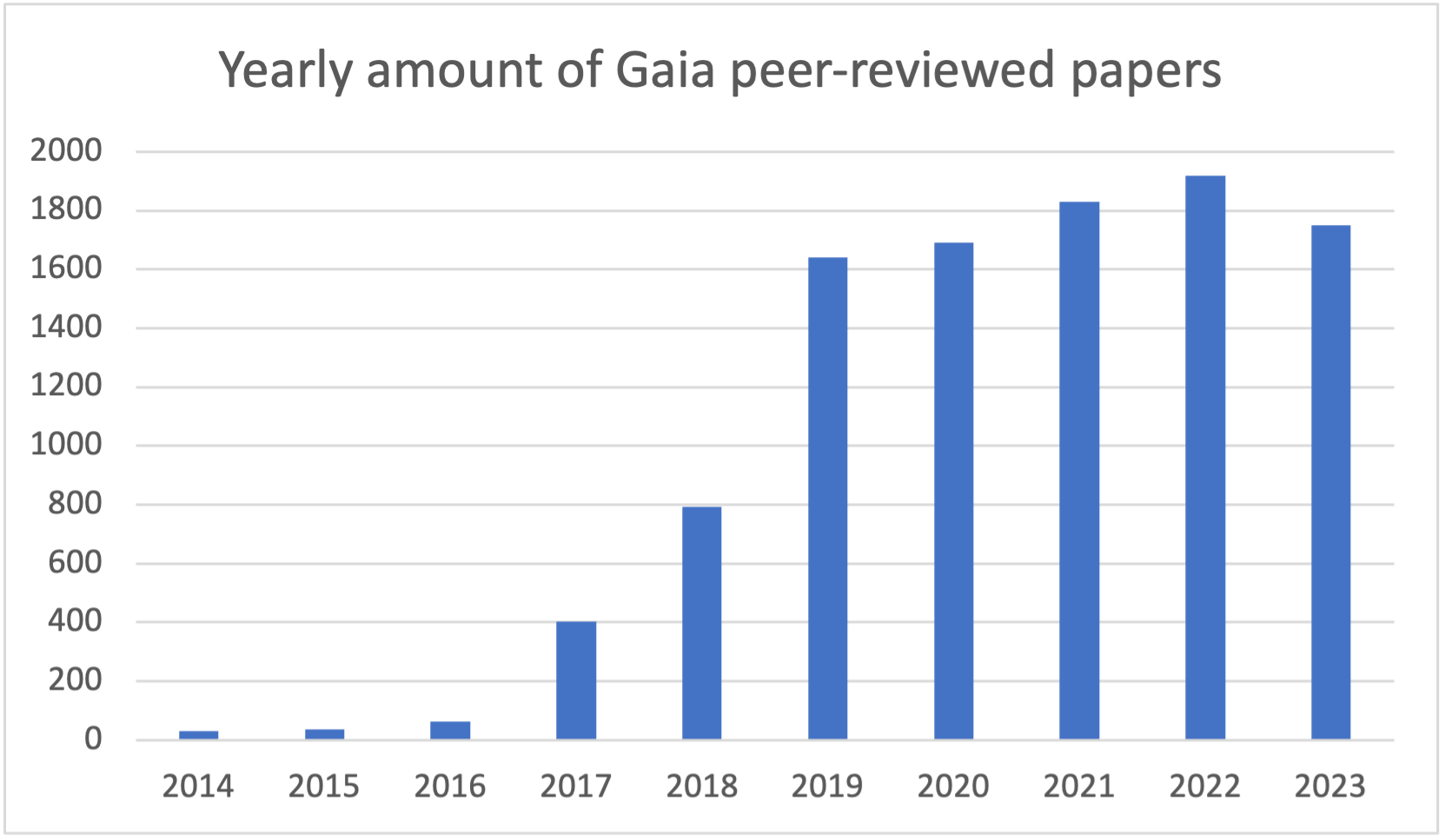
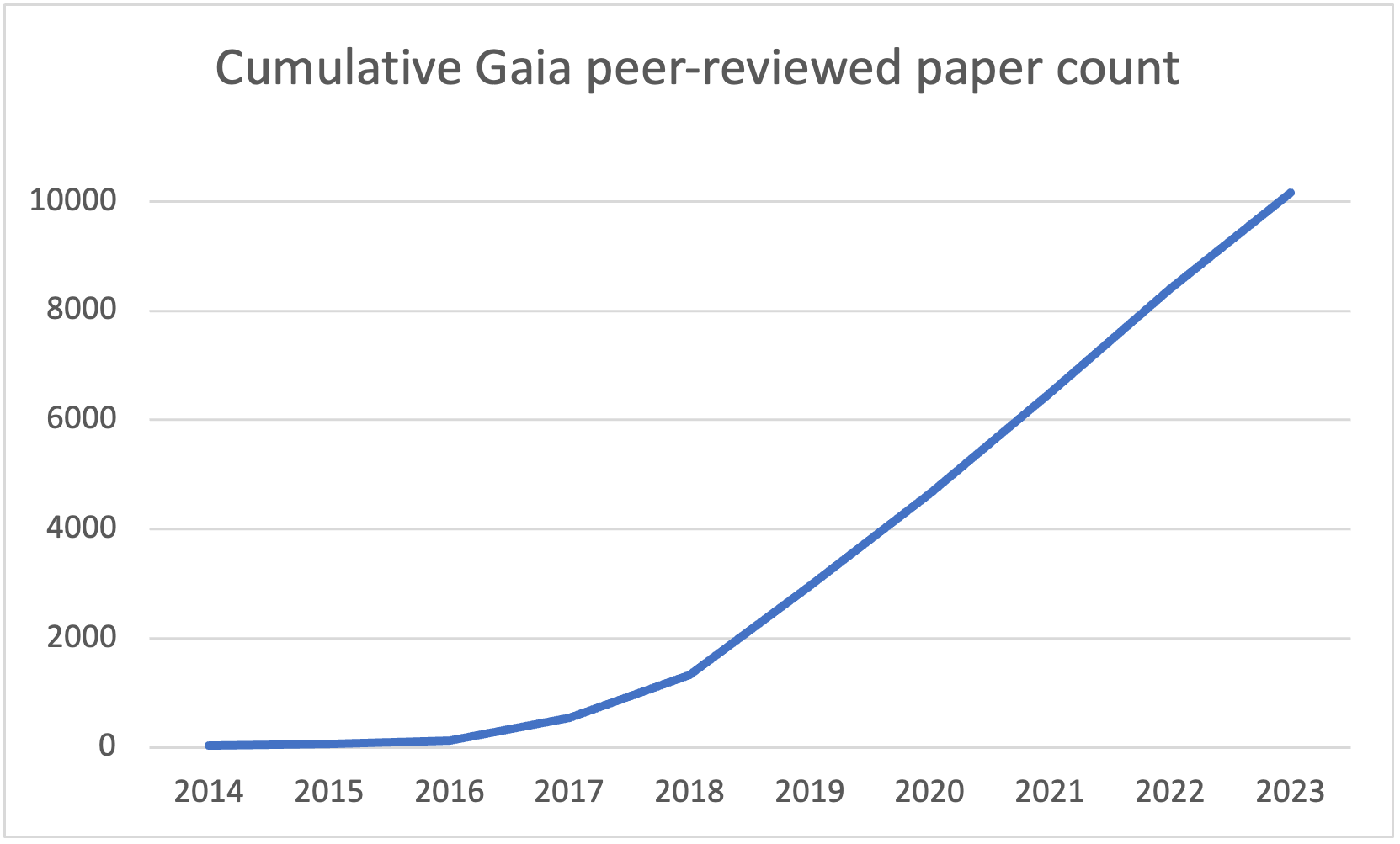
Figure 4. Overview of Gaia-related peer-reviewed publications. Credits: ESA/Gaia/DPAC - CC BY-SA 3.0 IGO.
Below some iconic visuals are shown highlighting the advances made with Gaia. First of all, our knowledge of our home galaxy has improved a lot. An updated view of the Milky Way top-down view was published along with Gaia's data release 3 and Gaia's launch anniversary. While detailed images exist of many external galaxies, our own galaxy requires extensive mapping from within to observe the structures that together give shape to the Milky Way. Even though Gaia has mapped about 2 billion stars, still it only covers 1% of the Milky Way stars. Some parts of our Milky Way are largely unexplored and are difficult to map even for a dedicated mapping mission like Gaia. Especially the area behind the Galactic Centre is hard to map, there are already so many stars in view when Gaia scans across the Galactic centre that the part behind is completely obscured by them (or should we say, Gaia is blinded out by the sheer amount of stars there). This is why we refer to the below image as an artistic impression. It is partly constructed from data, and partly from the latest Milky Way models.
Figure 5. Artistic impression of the Milky Way - face-on, based on the latest Gaia data. Credits: ESA/Gaia/DPAC, Stefan Payne-Wardenaar - CC BY-SA 3.0 IGO.
A second iconic image highlights the multi-dimensional data in the Gaia catalogues. It shows several different data products and was created to celebrate the first anniversary of Gaia's Data Release 3. From top to bottom we see a part of several Gaia sky maps: stellar motion, stellar age, brightnesses, variable stars, stellar extinction, interstellar medium, line-of-sight velocities, chemical information, 3D motion and colour information. While Gaia Data Release 3 contains about 60 different data products, the next data release is expected to contain about double this amount. We hope to provide a more detailed overview of the type of data to be expected with Gaia Data Release 4 soon. A first overview was provided during the Gaia symposium at the European Astronomical Society's annual meeting.
Figure 6. A composition of Gaia sky maps, based on different Gaia data products from Gaia's third data release. Created to celebrate the first anniversary of Gaia Data Release 3. Find all sky maps used for this creation here. Credits: ESA/Gaia/DPAC - CC BY-SA 3.0 IGO. Acknowledgements: created by Tineke Roegiers, based on different Gaia sky maps created by ESA/Gaia/DPAC - CC BY-SA 3.0 IGO and inspired by NASA's Multiwavelength Milky Way Images.
Celebrate with us Gaia's 10 years of science operations! The Gaia mission has come a long way since 25 July 2014 and the symbolic handover of the Gaia flag (featuring the fairing logo) by the team operating the spacecraft to the team responsible for science operations, marking the official start of Gaia's science operations phase. Soon, Gaia will stop taking new science observations. The cold gas needed to keep the spacecraft scanning at a stable pace will be depleted early 2025. The phase of capturing science observations is planned to end on 15 January 2024 and will be followed by a series of technology tests to help future missions with similar instruments onboard. The mission will then focus on producing the last data releases: Gaia Data Release 4, based on 66 months of data and containing for the first time all data products planned, and the final legacy catalogue: Gaia Data Release 5.
Figure 7. Gaia flag arrives at ESAC, as published here. Image: courtesy of Wil O'Mullane.
Figure 8. Visual created by the the Art of Gueguel. Original creator of Gaia's fairing logo. The girl, Sharly, originally reaching for the stars at a young age, has aged along with Gaia these 10 years. Credits: The Art of Gueguel and Sharly.
Story written by T. Roegiers
Credits: ESA/Gaia/DPAC
[Published: 25/07/2024]
- Removed a total of (22) style text-align:center;
- Removed a total of (10) style text-align:justify;
- Removed a total of (1) style display:none;
Image of the Week Archive
- Removed a total of (1) border attribute.
- Removed a total of (1) cellpadding attribute.
- Removed a total of (1) cellspacing attribute.








































 Sign in
Sign in
 Science & Technology
Science & Technology
